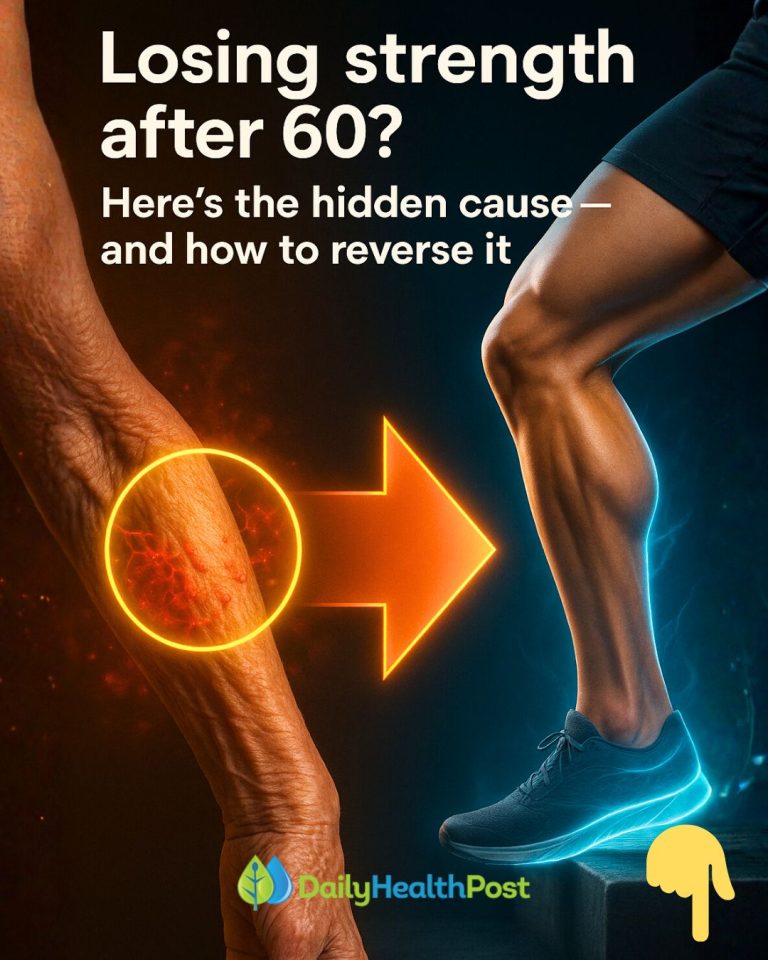Rebuild your strength after 60 — the 5 pillars most people overlook

- Myth #1: “If I just eat more protein, I’ll be fine.”
Yes, protein is non-negotiable. You cannot have muscle synthesis without enough protein. The problem? Piling your plate with chicken breasts or chugging protein shakes won’t do much if your muscles don’t receive a clear order to grow. It’s like having a stack of bricks (the protein) but no bricklayer (the exercise) to put them in place. You need both. Without the stimulus of resistance, there is no signal to build. - Myth #2: “A supplement will solve my problems.”
Many people think a magic pill or powder—creatine, whey protein, collagen capsules—is the answer. Can they help? Yes, they can be supportive. Are they essential? No. And do they work without movement? Almost never. Creatine, for example, has excellent research behind it, but it delivers the best results when combined with strength training. Supplements should only be used if you know exactly why you’re taking them and, ideally, with professional guidance. - Myth #3: “It’s normal to lose strength because of my age.”
It’s common, but it’s not normal or inevitable. There are 80-year-olds who climb stairs with ease and 60-year-olds who feel they can’t keep up with their own bodies. Age is a factor, but your lifestyle is a much bigger one. Your body doesn’t have an expiration date; it has a stimulus threshold. If you don’t cross that threshold, you will go backward. - Myth #4: “Eating ‘healthy’ is enough.”
This depends entirely on what you mean by “healthy.” For some, it means eating “lightly”—a bit of fruit, some whole-wheat crackers, a small salad. But if you’re not giving your body sufficient protein, healthy fats, key minerals, and enough overall energy, it lacks the raw materials for structure. It’s like trying to repair a house with only electricity but no lumber, cement, or nails. - Myth #5: “Walking is enough exercise.”
Walking is fantastic for your heart, your mood, and your general mobility. But to rebuild muscle strength, you need more. Your muscles need resistance, a load, a challenge. We’re not talking about lifting heavy weights at a gym. We’re talking about simple things: getting up from a chair 10 times in a row, stepping up and down on a single stair, or even just holding your own body weight for a little longer each day. That is how you send the right signal.
3. The 5 Pillars That Truly Rebuild Muscle After 60

The answer to regaining strength isn’t found in a single superfood or a miracle workout. It’s about a combination of key elements that, when brought together consistently, can transform your body. Think of them as the five pillars of a house. If one fails, the whole structure becomes unstable. Here are the five pillars you can start building from your own kitchen and living room.
- Pillar #1: Activate the Muscle (Even a Little Bit)
Your muscle needs an excuse to stay, and that excuse is called resistance. It’s effort. It’s movement against a force. This doesn’t mean you need to join a gym. It means creating a small challenge for your body to overcome. Examples include: getting up from a chair without using your arms, using a bottle of water as a weight, or pushing firmly against a wall or table. This sends the signal: “I still need this muscle!” This concept is called progressive overload. You start with what you can do, and little by little, you add a bit more. This not only activates muscle but also strengthens bones and joints. - Pillar #2: Nourish the Muscle with Strategy
Protein is the raw material, but the key is how, how much, and when. A crucial amino acid called leucine—found in eggs, meat, yogurt, and soy—acts like the construction foreman, giving the order to build. For this to work, you need to: 1) Eat complete proteins with all essential amino acids. 2) Spread your protein intake throughout the day, rather than saving it all for dinner. 3) Combine it with complex carbohydrates and micronutrients for energy and function. For example, a breakfast of eggs and oatmeal, a lunch of lentils and rice, and a dinner of fish and potatoes. This way, you stimulate muscle synthesis multiple times a day.
see more on the next page